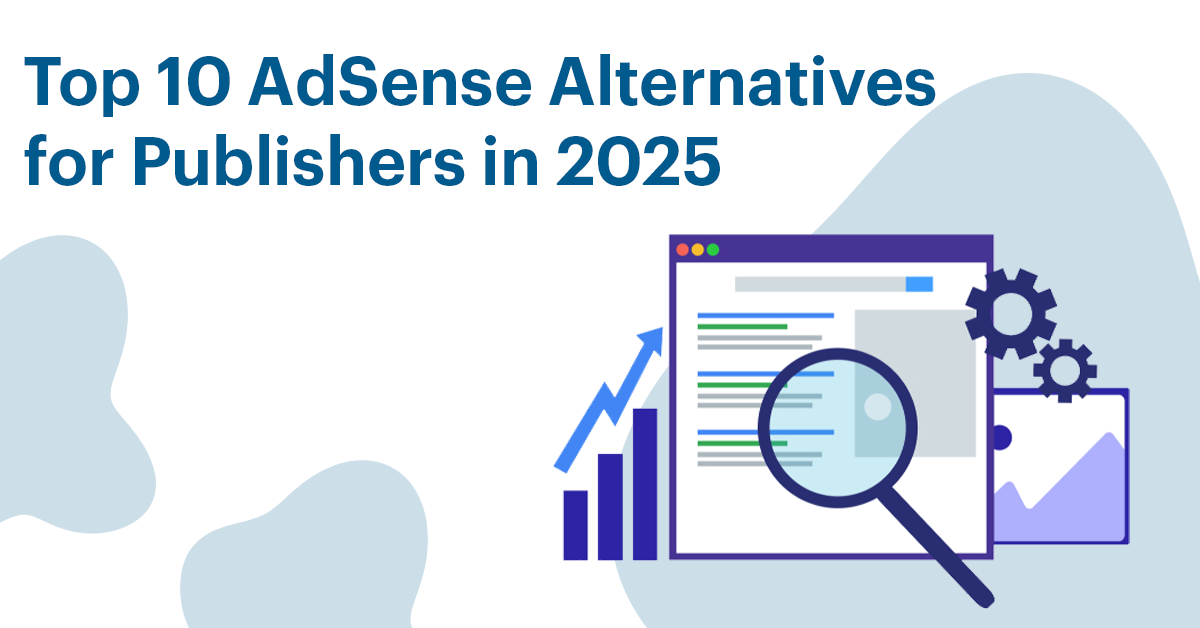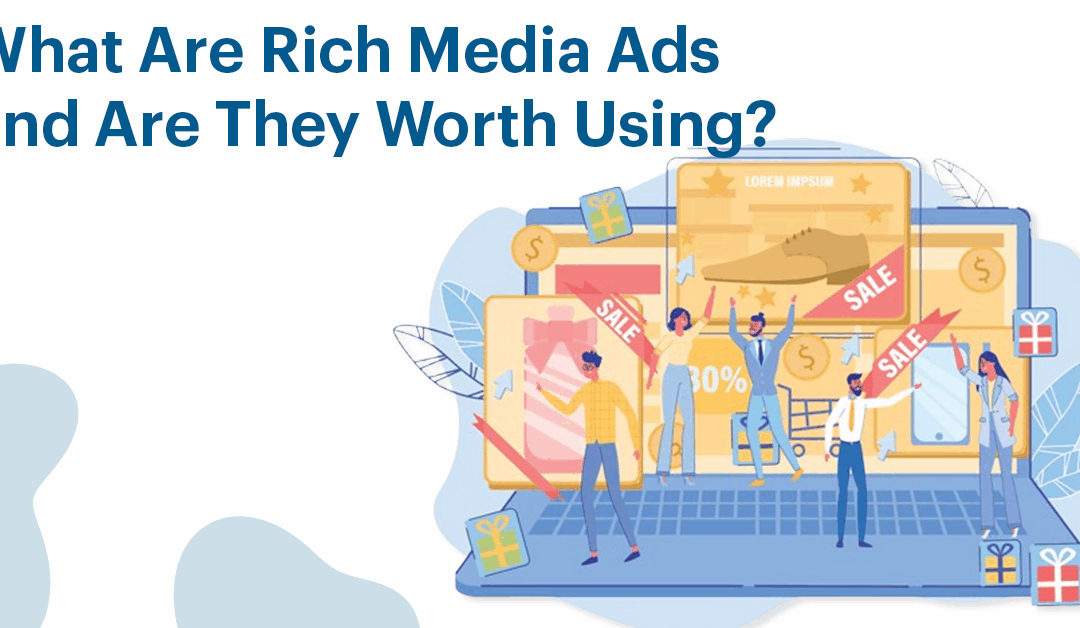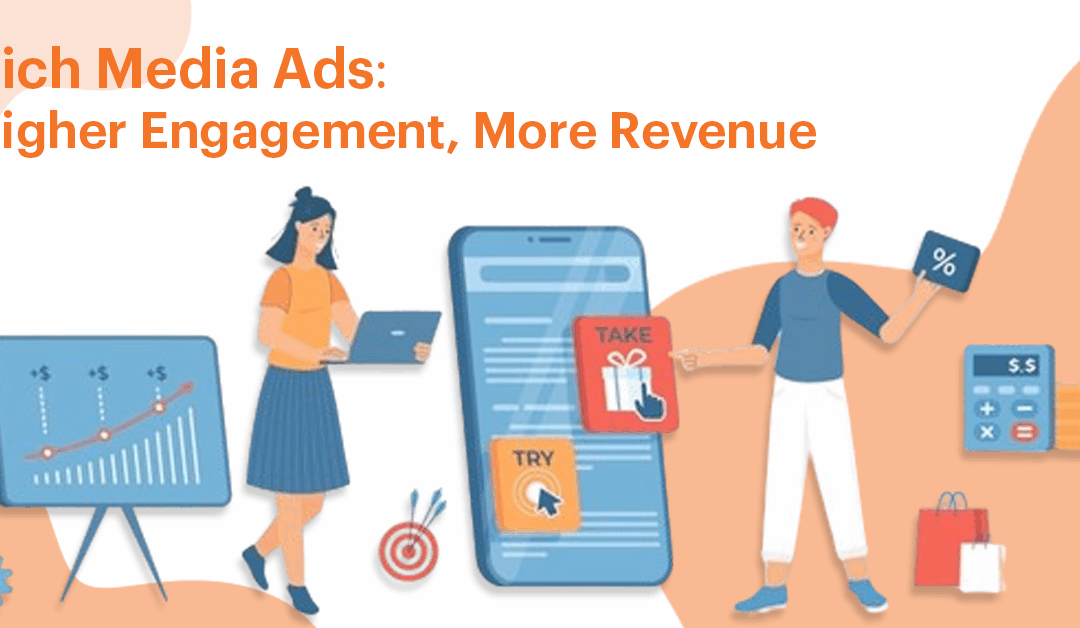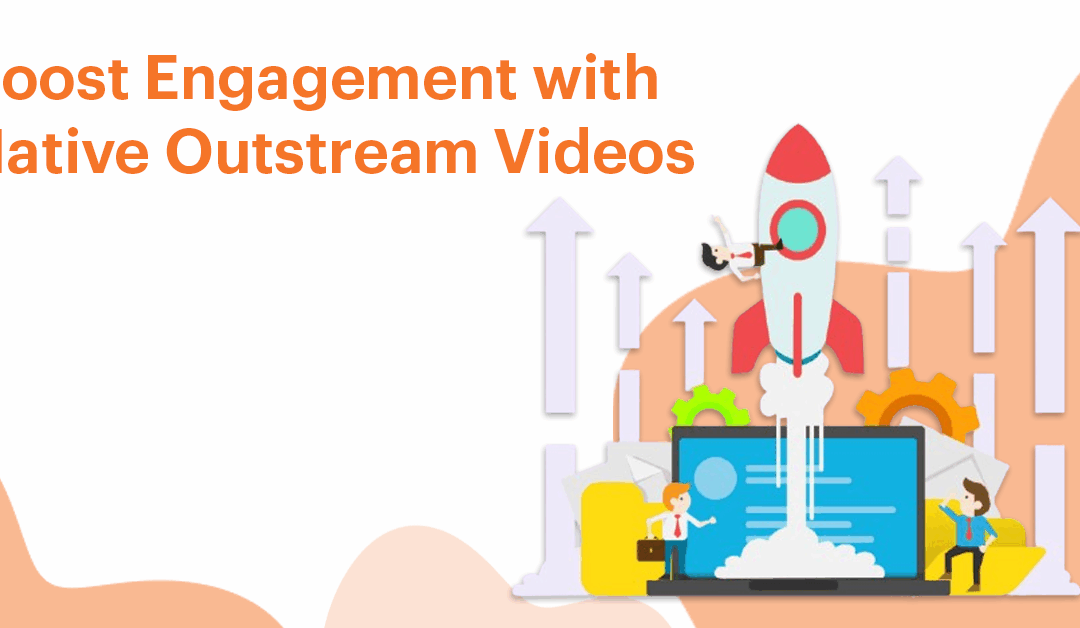Google AdSense is one of the largest display advertising networks in the world. Many people choose it because of its ease of use and the fact that Google’s ecosystem have wider integration. The system has a few limitations. There are a few issues, including lower-than-expected payouts and ad-quality concerns, that may impact the UI. AdSense’s many flaws drive publishers to seek out AdSense alternatives, which offer better rates, more flexible pricing, superior ad technologies, increased visibility and minimal UX impacts.
What is AdSense?
AdSense, a Google-owned online advertising program, allows web admins to make money through the display of digital ads on their website. It was launched in 2003 and is a part of Google Ads.
Publishers are website owners who enroll in the program. Businesses and brands that want to advertise online to market their product or service are called advertisers. AdSense is the middleman between advertisers and brands.
This is a short explanation of how AdSense functions:
Sign up: Google must approve the creation of an account.
Verify code: The code must be placed on websites that will run the ads.
Ad auctions: AdSense conducts real-time bidding when people are visiting the site. Advertisers must bid in order to have their ads displayed on the website. Automated auctions are completed in milliseconds.
Ad placement: AdSense displays the ad of the bidder who won the auction on the site. The program places ads that are either relevant for the visitor or relate to the content of the site.
Generate Revenue: Publishers can generate revenue by earning money from visitors who view the ads or click them. AdSense tracks this behavior and makes sure publishers receive their fair share.
Three parties are involved in the system, and each has a different role. These roles come into play at various points during the process of placing an ad.
Publisher Responsibilities
Publishers’ only responsibility after placing the AdSense code on their site is to optimize their website for better monetization by following the steps below:
- Choose the optimal location for your ads on the site.
- Choosing an appropriate size and format for your ad, such as square ads, responsive advertisements, or banners.
- Filtering can be used to block ads that are inappropriate from certain advertisers or niche industries.
- Use various tests to improve revenue generation by fine-tuning ad placement.
Advertiser Responsibilities
AdSense is a process that requires more involvement from advertisers. They are responsible for:
- Design and create attractive advertisements using video and images.
- Budgets are used to determine how much money can be spent on advertising campaigns.
- Choose a bidding strategy such as the cost per click, cost per action, or cost per 1000 impressions.
- Determining the target audience by analysing factors such as location, demographics, and browsing habits.
AdSense Responsibilities/Functions
It fully automates the bidding process and ad placement. Publishers and advertisers don’t have to perform manual actions. They only have to specify their strategies and preferences.
- The matching of websites and relevant ads is based on the preferences of publishers, advertisers, targeting, bid strategies, etc.
- Automated auctions are held to make sure that the publishers receive the highest possible prices for their advertising inventories.
- The winning ads will be displayed on websites when users access them.
- Assuring publishers receive their advertising revenues in a timely manner.
- Publishers can improve their revenue strategies by tracking the whole process and providing metrics.
AdSense, as a network that collects ad inventory and sells it to advertisers, is important to know. AdSense is different from other programmatic platforms, such as Google Ad Exchange, where advertisers and publishers buy ads in real-time bids.
Ad exchanges like Google AdX also offer header bidding, which allows publishers to connect with multiple ad networks, increasing the competition and ultimately driving revenue.
Header bedding is different than real-time bidding in the sense that, while real-time bidding requires sequential auctions to be conducted by each of the ad exchanges involved, header bedding permits simultaneous bidding with header bidding partners.
What are the alternatives to AdSense?
AdSense has a low barrier to entry and is very easy to use. This makes it an excellent option for smaller and mid-sized publishers who have limited resources and technical expertise. It has a few disadvantages.
There are many reasons why publishers seek Google AdSense alternatives.
1. A narrow range of Ad Types
AdSense can be a good advertising network for newbies, but its quality of ads and selection leaves a lot to desire. Google AdSense, for example, does not permit pop under advertisements.
2. Limit Ad Customization
AdSense is not the only alternative. Many AdSense alternatives are also specialized in contextual advertising. They can even tailor their solutions to meet publisher’s needs. Many networks assign account executives who conduct website audits and find the right solution to meet a publisher’s specific needs.
This level of customization and attention to detail is rare, if not impossible, with a monolithic program like AdSense.
3. Limit Revenue Potential
AdSense, which is an entirely self-served program, leaves publishers on their own to optimize web pages in order to maximize ad revenues.
Alternatives will optimize the ad placement to maximize revenue on each page without disrupting UX.
4. High Revenue Share
AdSense is popular so that it can charge a higher percentage of ad revenues than other partners.
5. Customers are not supported
Customer support for Google AdSense is entirely non-existent. If publishers run into technical problems with their ads, they are limited to Google’s online resources.
6. More Risk to Be Banned
Google AdSense adheres to strict guidelines in order to protect its advertisers and prevent fraud. AdSense, for example, requires that ads not attract unnatural attention.
Many publishers end up inadvertently violating such requirements, which can result in the suspension or termination of their AdSense accounts and the loss of all earnings.
Publishers should explore AdSense alternatives. This is not just a way to replace AdSense but also to maximize ad revenues.
AdSense Alternatives: What to Consider?
Only after considering some important factors can, you choose the best alternative. These include:
1. Advertisement Formats Available
Display ads may be in the form of text ads or native ads. Video ads and social media ads are also possible.
AdSense is not the only option for publishers. They should also look at alternatives that give them access to formats aligned best with their content, target audience and goals.
2. Revenue Sharing Models
Google AdSense follows an average revenue split of 68:32, where publishers keep 68%. AdSense also calculates revenue using eCPM, or the effective cost per 1,000 impressions (for advertiser bids).
Publishers should compare the AdSense alternatives and their revenue-sharing model before choosing one.
3. Advertising Quality and Relevance
Clicks may be reduced if you use low-quality, irrelevant ads. These ads may contain potentially intrusive and misleading content that can negatively impact the user experience.
It is, therefore, vital that you look into the types of advertisers available before making a decision. Platforms that have higher-quality advertisements from relevant advertisers can improve revenue as well as user experience.
4. Reliability & Technical Support
It is important to note that programmatic advertising can be a very technical area. Many publishers don’t know how the system works. Publishers and audiences can benefit from a platform that offers accurate and reliable targeting, as well as consistent uptime.
Best AdSense Alternatives
- Media.net – High-paying contextual ads powered by Yahoo Bing Network.
- Ezoic – AI-powered optimization that boosts ad revenue and user experience.
- PropellerAds – Self-serve platform with high CPMs and global reach.
- Sovrn //Commerce (VigLink) – Monetize content with automatic affiliate links.
- AdThrive – Premium ad network for lifestyle bloggers with top-tier CPMs.
- Monumetric – Full-service ad management with minimum traffic requirements.
- Mediavine – High-quality ads and fast-loading tech for growing sites.
- Revcontent – Engaging native ads with better control and payouts.
- She Media – Focused on female content creators with lifestyle audiences.
- BuySellAds – Direct ad sales with complete control over pricing and placements.
Conclusion
Google AdSense may be one of the most widely used ad platforms, but it’s far from the only option. As publishers grow and look for better revenue opportunities, more control, and improved user experience, exploring alternatives becomes essential. The top AdSense alternatives in 2025 offer tailored ad formats, higher payouts, and better support—empowering publishers to optimize monetization without compromising on quality or compliance. Choose a platform that aligns with your content, traffic, and long-term goals to unlock your site’s true earning potential.




